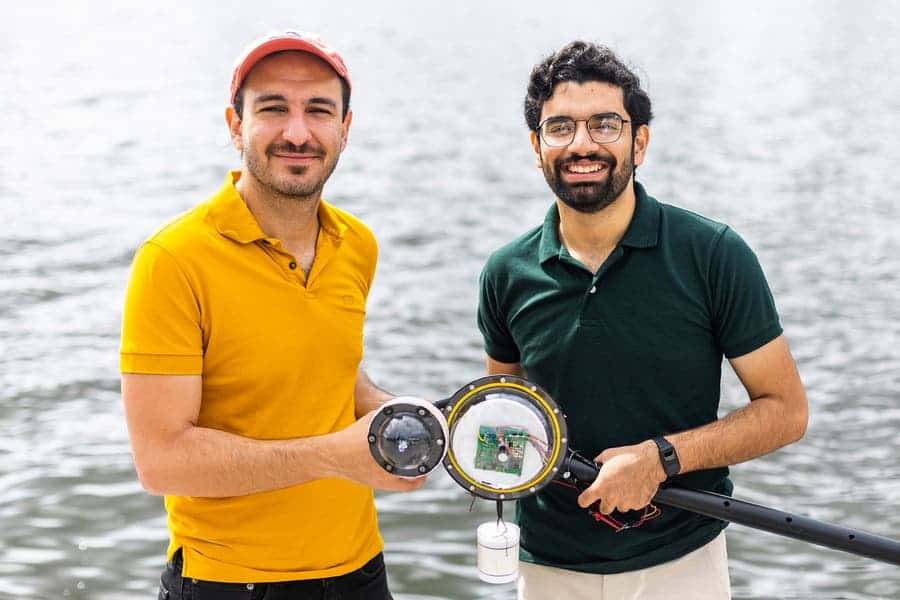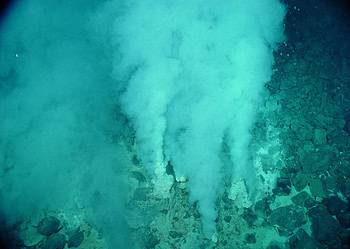
Sending rovers to Mars and spacecraft to the farthest reaches of the solar system is pretty standard at this point, and we couldn’t be happier because this means scientists are constantly pushing the boundaries of exploration. But, without taking any merit from these remarkable achievements, it’s easy to lose sight of the fact that there’s an entire alien world that’s waiting to be explored here on Earth: the hidden world of the oceans.
As much as 95% of the world’s oceans remain unmapped, unobserved, and unexplored. Since we can’t really protect what we don’t know, only about 7% of the world’s oceans are designated as marine protected areas (MPAs). Things may stay this way for a long time given the challenges and enormous cost entailed in exploring our oceans unless we develop cost-effective underwater sensing solutions — and some researchers at MIT think they’ve made exactly what we need.
In a new study, MIT researchers have demonstrated a novel underwater camera that is about 100,000 times more energy-efficient than any other underwater camera. It doesn’t have any wires to a power source nor does it have a battery. Instead, the camera is powered entirely by sound — underwater acoustic energy generated by passing ships, marine life, and anything that can make waves.
Since it doesn’t require external power, the device can run for weeks or even months before it needs to be retrieved, and could thus reach inaccessible nooks and crannies of the oceans that are currently unexplored.
The camera takes pictures in full color, even in dark underwater environments. It then beams them back to a receiver through the water using sound waves.
“One of the most exciting applications of this camera for me personally is in the context of climate monitoring. We are building climate models, but we are missing data from over 95 percent of the ocean. This technology could help us build more accurate climate models and better understand how climate change impacts the underwater world,” Fadel Adib, associate professor in the Department of Electrical Engineering and Computer Science and director of the Signal Kinetics group in the MIT Media Lab, said in a statement.
Riding the waves of sound

To generate energy, the camera uses piezoelectric transducers that convert mechanical energy into electricity. Many other devices exploit piezoelectricity. For instance, when you speak into your phone’s microphone, piezo crystals turn the sound energy in your voice into electrical signals that are relayed by the telecom network or broadband to communicate.
But the power generation is not particularly generous, so the MIT researchers had to keep energy consumption to the bare minimum. They used ultra-low power imaging sensors that capture images solely in grayscale. This compromise turns out to be particularly problematic underwater where there is not a lot of light.
The challenge was overcome by simultaneously using red, green, and blue LEDs. When the camera takes a photo, it takes three separate snapshots for each LED light. When the three images are combined in post-processing, a full color image can be reconstructed.
“When we were kids in art class, we were taught that we could make all colors using three basic colors. The same rules follow for color images we see on our computers. We just need red, green, and blue — these three channels — to construct color images,” co-author Waleed Akbar said in a statement.
To send the pictures it takes to the outside world, the camera sends the image data encoded as bits of 1s and 0s to a receiver using underwater backscatter. The way it works is the receiver is constantly emitting sound waves through the water to the camera device, which reflects these waves back. The camera can flip between absorbing or reflecting soundwaves, two states that correspond to the 0 and 1 in digital bits.
“This whole process, since it just requires a single switch to convert the device from a non-reflective state to a reflective state, consumes five orders of magnitude less power than typical underwater communications systems,” Afzal says.
So far, during tests the camera has snapped high-resolution images of an African starfish with its tiny tubercles clearly visible, plastic bottles floating in a New Hampshire pond, and even monitored the growth of an underwater plant called Aponogeton ulvaceus for an entire week.
Next, the researchers’ goals are to extend the camera’s memory so it can stream video in real time and increase the range. At this moment, the prototype underwater wireless camera can transmit data as far as 40 meters from the receiver. By extending this range, the camera can travel further and deeper underwater.
The findings were reported in the journal Nature Communications.






